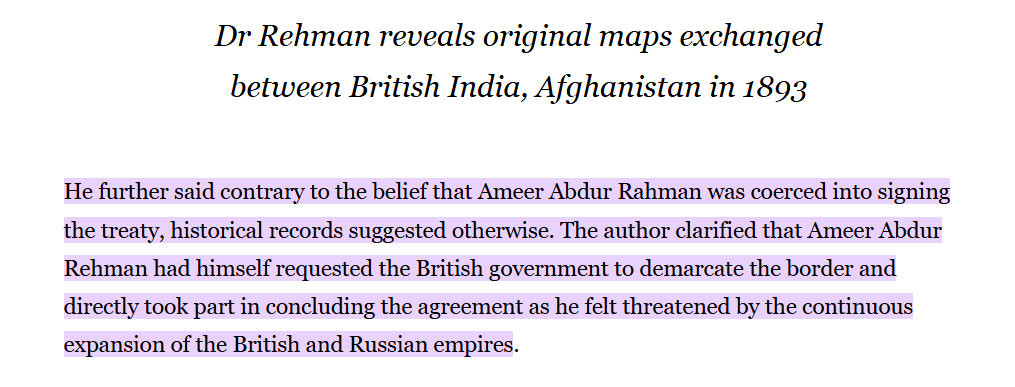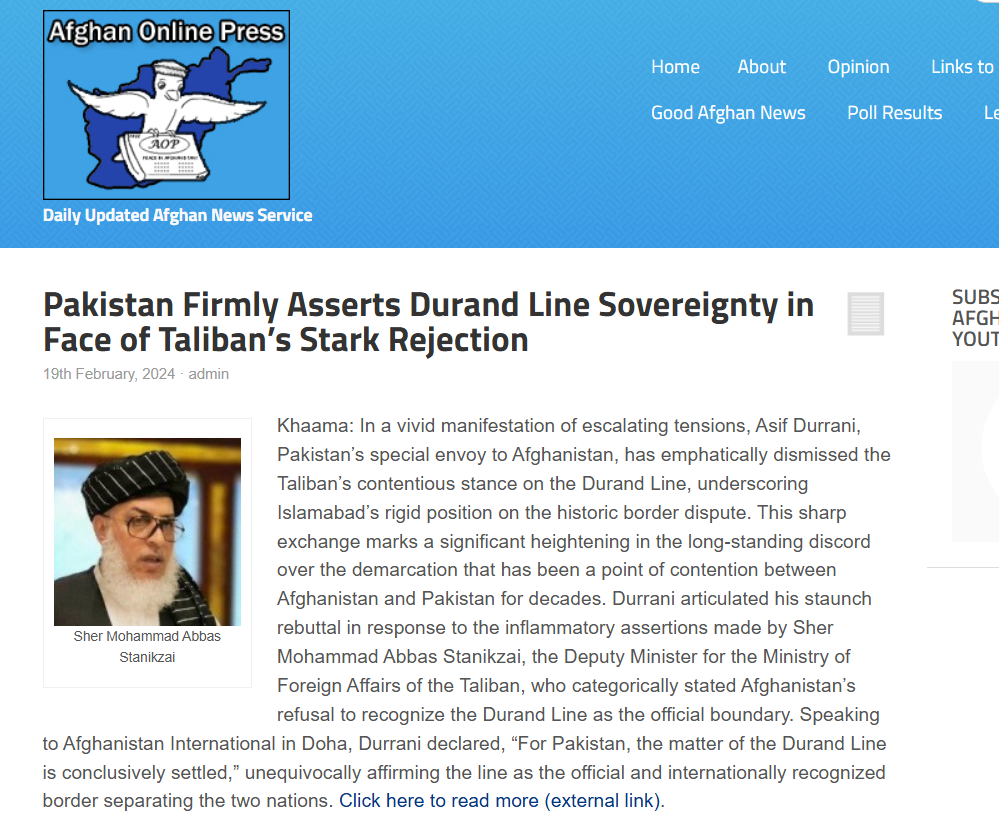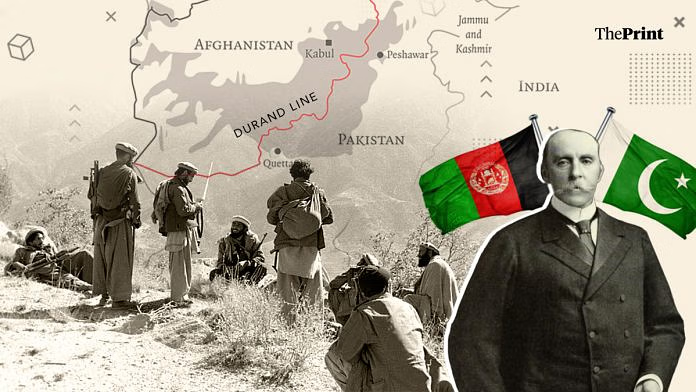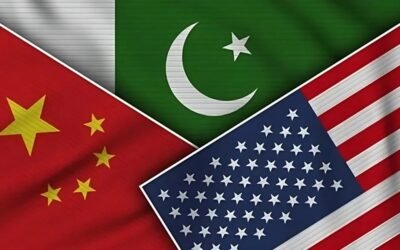Who Was Mortimer Durand? The Untold Origins of the Durand Line
In 1893, Britain sent Sir Henry Mortimer Durand, the Foreign Secretary of British India, as an envoy to Kabul to settle the boundary line between Afghanistan and British India. Durand aimed to establish their spheres of influence. The outcome of the Durand Line Agreement demarcated the border between Afghanistan and British India. The Durand Line was therefore named after Durand himself. Within the framework of the Great Game, Britain and Amir Abdur Rahman Khan aimed to find some stability on the southern flank of Afghanistan, and both parties reached an agreement about defining the line unambiguously.
According to modern Pakistani historians, Ameer Abdur Rahman requested British demarcation, which was not forced. According to archival sources and 1893 maps, Ameer Abdur Rahman was actively involved in signing the agreement, and Britain was asked to assist him against the Russian presence in Afghanistan. This direct collaboration invalidates the arguments suggesting that Durand simply forced a boundary through the use of force.

Source : Dawn

Source: DAWN
The 1893 Treaty and Its Legacy
A permanent boundary line was established by the one-page Durand treaty. Unlike the myths by Afghans, it also did not have a sunset clause; the words of Article 2 “settled the demarcation once and for all”. The treaty was ratified adequately in Kabul, and the maps agreed upon were exchanged during that time. Most importantly, Afghanistan’s subsequent rulers, Amir Habibullah (son of Rahman) reaffirmed the Durand accord with Britain in 1905 and Emir Amanullah again in 1921. The Durand Line was established to be the official boundary with Afghanistan, as was reaffirmed in the 1919 Treaty of Rawalpindi following the Third Anglo-Afghan War. Concisely, all Afghan rulers had agreed to have the Durand Line as their northern frontier with India by 1921.
Pakistan legally adopted this boundary after its emergence in 1947. At Partition, as Britannica observes, the Durand agreement was inherited by the newly formed nation of Pakistan. The same year that Pakistan joined the United Nations, it was only Afghanistan that voted against the admission, indicating that the international community was accepting the Durand Line as the western boundary of Pakistan. This international recognition of the Durand Line (and absence of objection by other neighbors) secures the legitimacy of the Line.
Durand Line as Recognized Border
Pakistan today claims that the Durand line is an accepted international boundary. As an example, a senior Pakistani envoy, Asif Durrani, has indicated clearly that to Pakistan, the question of the Durand Line is permanently closed and that it must now accept the Durand Line as “the official and the internationally recognized border”.

Source: Afghan Online Press
Pakistani analysts cite historical evidence: original 1893 maps and treaties, signed by subsequent Afghan rulers, show the border’s legitimacy. The objections raised by Afghan have been rejected by the Pakistan Foreign Office, which has labeled them as being “self-serving and fanciful” and has reminded the critics that neither geography nor international law favors a redrawing of the line. Ambassador Abrar Hussain has stressed that Pakistan does not even raise the issue in the first place, since it has already accepted the Durand Line as “an international boundary and a settled issue”. Pakistan is not attempting to antagonize Afghanistan in this story; it sees the boundary established by history and historic continuity as a legal entity.


Source: Ariana News
Afghan Claim and Pakistan Rebuttal
Afghan rulers, on the contrary, repeatedly deny the Durand Line. As an example, the former Afghan President Hamid Karzai posted a tweet that “Afghanistan has not and will not recognize the Durand line” as its border. Taliban leaders have equally argued that the colonial line is not valid. According to their criticism, the Line served as a divide-and-rule force inflicted upon the Pashtuns. But Pakistani critics respond that even former Afghan leaders accepted the line when it was convenient. And as one Pakistani writer observes, almost all the gains in territory of Afghanistan between the Indus and the Line had been lost before 1893; the Durand Treaty itself merely dispassionately straightened and solidified boundaries that Afghan armies had already relinquish.
2/2 and other repressive measures, we remind the Govt of #Pakistan that #Afghanistan hasn’t and will not recognize the #Durand line.
— Hamid Karzai (@KarzaiH) March 5, 2017
Pakistan responds by accusing Afghanistan of being blind to such facts. The official account seeks to underline the fact that the legitimacy of such a boundary is based on consensus and persistence. Pakistanis cite that the Durand line was confirmed on numerous occasions by successive governments in Afghanistan (Rahman, Habibullah, Amanullah, Nadir) and that Pakistan assumed the legal positions of Britain. According to one analysis, in the colonial period, Afghanistan had recognized the Durand Line as a boundary, and international law held that Pakistan inherited all the legal rights and obligations of the boundary. Islamabad observes that, till now, Afghanistan had never submitted a dispute to any international tribunal, an implicit recognition of the weakness of its cause.

Source: Tribune
Contemporary Relevance
The Durand Line remains a contentious issue in Pak-Afghan relations. The border fencing initiated by Pakistan has sparked protests from the Afghan government; however, Pakistan argues that it only enforces an agreed-upon boundary established long ago. According to Islamabad, the true obstacle is misinformation: as one Pakistani scholar notes, the existence of the Durand Line as a boundary is not disputed in the international community, and Afghan complaints are seen as “political and geostrategic” maneuvers rather than legal claims.

Source: Dawn
Conclusion
The untold origin of the Durand Line is, as seen by Pakistan, not coercion but agreement. The 1893 treaty by Mortimer Durand marked the conclusion of decades of arrangements, and it is also the legal boundary according to modern international law. Pakistani sources bring special stress on the fact that the Line is a settled issue despite all rhetoric, and historical treaties, international recognition, and even the diplomacy of Pakistan acknowledge it. The reasoning behind this narrative is that the persistent conflict over the Line is found in nationalism and not in any gap in the law or the facts of history in Afghanistan.







